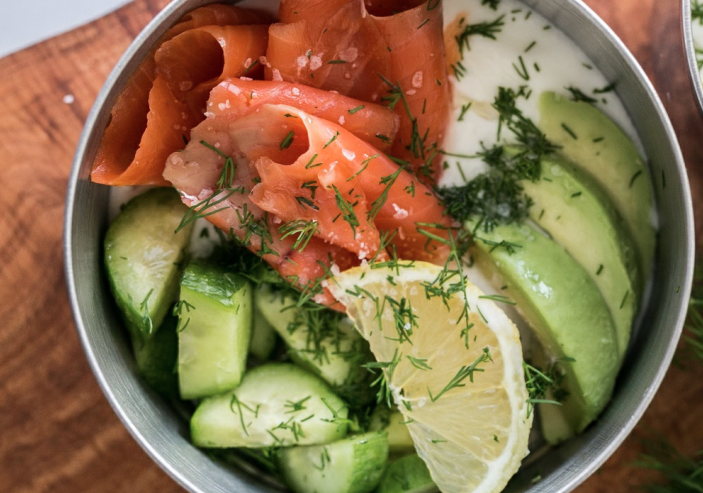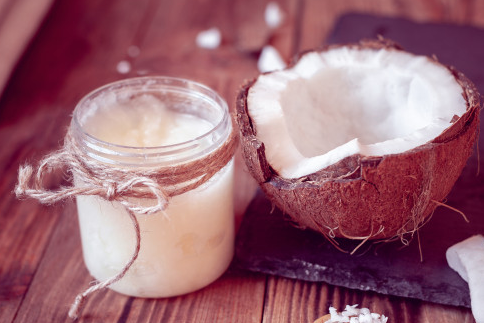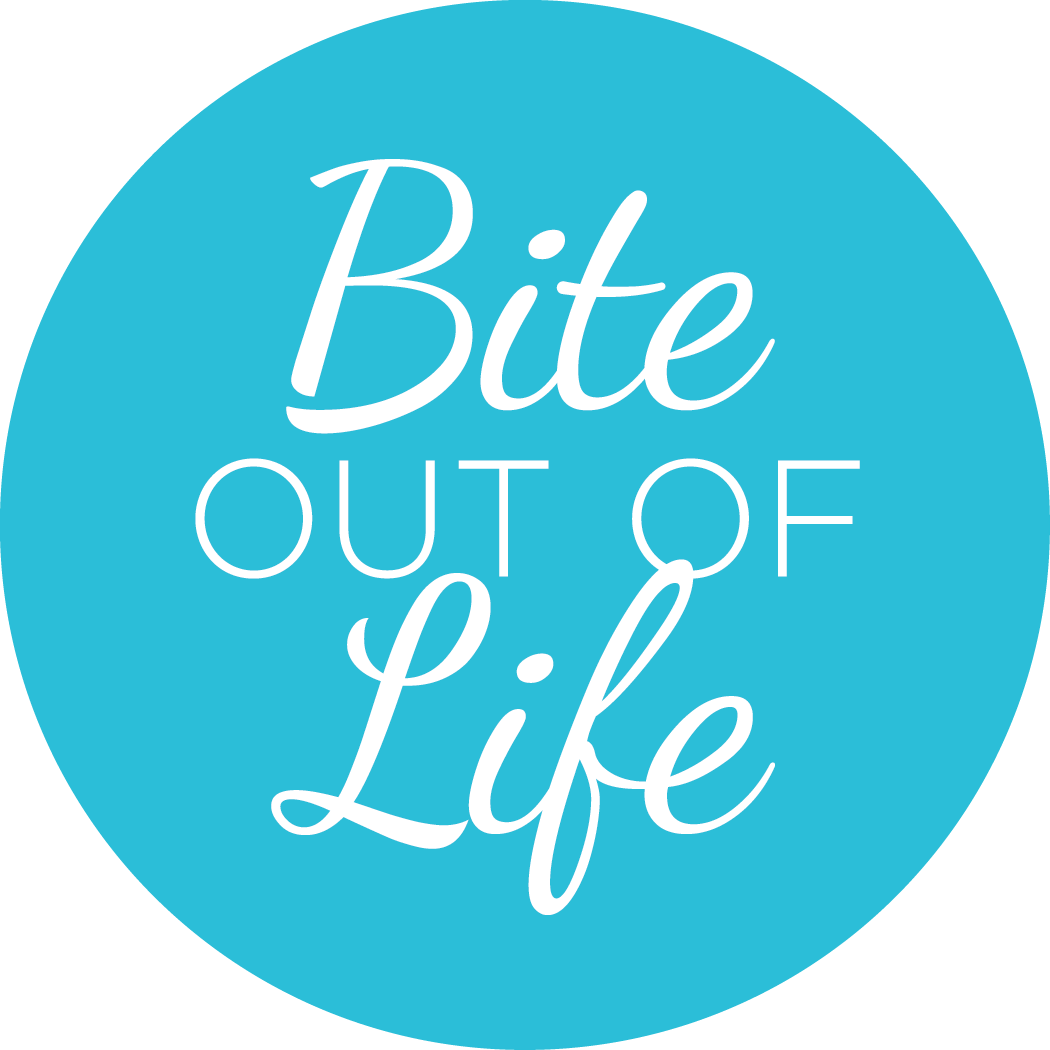
The ketogenic diet is a very low carb, very high-fat diet and very, very trendy right now. And possibly for good reason.
At first glance, it’s led to some dramatic weight loss stories – not just from word of mouth, but also backed by some research. It’s also supported epilepsy patients in the reduction of seizure episodes in children.
On the other end of the spectrum, some experts have likened the Keto Diet to a glorified Atkins Diet. Remember the good Dr. A from the 1980s when it was all the rage to eat nothing but bacon and steak, washed down with cup of whipping cream? (can I just say, gross!)
There’s also been a debate with respect to going Keto and its effects on hormones. Does it throw your hormones off-balance? Does it help to rebalance hormones? I’ve read the info supporting both points of view, so I’m sure these can be confusing to decode for many readers.
Oh, if only things could be simple, right?
Since I’ve been covering the ABCs of Hormonal Health (backtrack to A for Adrenals if you haven’t started!) – I thought I’d reserve K for Keto – because so many concerned women have DMed me about it and because it can impact your hormones.
Read on for some of the lowdown on how it reprograms your metabolism (for “ketosis”), and whether or not it’s something for you to consider – because while it can be suitable for some people, it might not be for everyone. You should never hop on the keto bandwagon without a thorough investigation. And the support of a an experienced nutrition professional is also wise.
What is “ketosis?”
Carbs (sugars & starches) are the preferred fuel for your brain and muscles. They use carbs first, whenever they’re available.
This is why maintaining stable blood sugar can affect your attention, mood, and energy level.
However, when very low amounts of carbs are available for fuel, your body starts making compounds known as “ketones.” These are your body’s “backup fuel.” And your body makes them from fat.
Ketogenic literally means “the generation of ketones.”
After being on a diet very low in carbs for a while, your blood level of ketones increases. This is the metabolic state known as “ketosis.” It’s the same process that your body goes through if you’ve fasted for 72 hours and depleted your supply of carbs as fuel. That’s the trigger for turning fat into ketones.
I want to be super clear on one thing: “ketosis” from a ketogenic diet is not the same thing as the dangerous condition known as “ketoacidosis.” That is a serious complication of diabetes that occurs when your body produces high levels of blood acids (called ketones) and develops when your body can’t produce enough insulin. Totally different thing.
Ok – moving on………
Ketogenic diet for weight loss
With a high fat intake, it may be surprising to know that studies show that a ketogenic diet is effective for weight loss.
But it’s true. As I have always said, you don’t get fat from eating (good) fat. It’s sugars (in all forms) that stimulate the body to store fat (go back to the D is for Diabetes blog for a refresher if you want to understand the mechanism).
It may also have better results than low-fat diets. At least one study showed that people lost 2x times more weight on a ketogenic diet than those on low-fat or calorie-controlled diets.
How is this possible?
Eating all that fat and protein is filling. It helps release satiety hormones that tell us that we’re full and satisfied, and that we don’t need to eat anymore. If you would like to dive deeper into the ‘how’, keto increases the hormone called leptin in the bloodstream. Leptin signals to your brain that you’re experiencing ‘fullness’ and that you should stop eating. On the flip side, ghrelin, a hormone which increases appetite, is actually suppressed when someone is in the ketogenic state. For many people, when they are following a keto diet, once they get used to a new way of eating, they don’t need to count calories or track food intake, as they do with low-fat or calorie-controlled diets. And that in itself makes the keto diet attractive to some.
By eating enough fat and protein to go into “ketosis,” you can actually feel fuller and eat less food overall. Of course, this can help with weight loss.
Ketogenic diet for thyroid function
Some studies have shown a drop in T3 thyroid hormone (here’s one example).
Proponents of the Keto diet believe that this doesn’t automatically cause a hypothyroid condition and that the drop in T3 could actually be a sign that your body is working more efficiently. That is, your body isn’t producing more T3 than is needed.
Since thyroid conditions can often be traced back to an auto-immune issue, it is also believed that going keto can help reduce inflammation and potentially dampen the auto-immune responses of the body – again you get a better functioning thyroid. If you want more detail check out this abstract here.
Just a caution – if you do have a hypothyroid condition, be sure to have regular check-ins with your healthcare team and consult with them before embarking on any new dietary regime.
Ketogenic diet for blood sugar balance
As you can imagine, having very low levels of carbs can help reduce blood sugar and insulin resistance issues. We covered this a couple weeks ago, but here’s a quick summary. Excess amounts of carbohydrates in the form of sugars, starches, and ultraprocessed foods, will elevate blood glucose levels. That triggers a cascade of the hormone, insulin, to be released into the bloodstream to draw sugar into cells. Over a short period of time, your body is usually capable of dealing with it effectively.
If you continue to consume simple sugars day-in-day-out, your cells stop responding to the insulin (which makes the pancreas secrete even more to try to kick start the process). Blood sugar continues to rise, which can damage blood vessels, etc. Insulin levels start decreasing (because at this point, your pancreas just can’t keep up) and well, guess what? Blood sugar continues to rise. (Revisit the D blog for more detail).
In a ketogenic diet, since carb consumption is limited, there’s a much less chance of this happening and so it may be a suitable option for people with Type 2 diabetes. Anecdotal reporting definitely shows promise for people to reverse the condition and/or reduce the amount of medication they take to control it. But it is vitally important to note that people on medications should never change their doses by themselves without medical consultation.
One last note on blood sugar balance – remember how we said that when levels fluctuate, that your body gets stressed out and so cortisol levels also rise? Well, again if we’re cutting out most carbs, you’re going to have fewer sugar spikes and therefore, more stability with respect to cortisol levels as well.
How to do the ketogenic diet
Right off the top, let me emphasize: not everyone should go on a ketogenic diet. It takes a lot of thought and a lot of planning to ensure you are getting the right mix of macronutrients. Many people find it quite restrictive and are unable to stay on it for a long time. But if it’s something you think you’d like to explore, make sure you consult with a trained nutrition practitioner before you try it. It can have side effects, including the infamous “keto flu.”
All that said, here’s the down-low on the basics. The ketogenic diet involves getting 60-75% of your calories from fat, 20-35% from protein, and just 5% from carbs.

The foods to focus on for a ketogenic diet are meat, fatty fish, eggs, nuts, seeds, healthy oils, like avocados and olives, and low-carb vegetables (cucumber, celery, peppers, zucchini, leafy greens, etc.) (Can you do keto if you are a vegetarian or a vegan? Yes – but as you can imagine, even more planning is required!)
The main thing to avoid are foods that are high in carbs. These include sugary foods and desserts, grains, fruits, legumes, starchy vegetables, alcohol and “diet foods” – AKA processed crapola.
And because of the limits on fruit and starchy vegetables, many people on the ketogenic diet need to take supplements. This is because, in addition to their sugar and starch, fruits and starchy veggies are a great source of vitamins, minerals, and phytonutrients. So, if you’re cutting those foods out, you still need to give your body those nutrients. And often, that means supplements.
Do I recommend the keto diet?
Yes, sometimes I do. It can be helpful for weight loss, improving blood triglycerides (fat), cholesterol and other health conditions including type 2 diabetes. The jury is still out and more research is still ongoing about when and how it works for women and hormonal issues so I approach this very carefully after a thorough review of options with clients.
And if you are looking at the keto diet because your cousin’s friend’s sister’s workmate dropped a tonne of weight in a short period of time just by doing keto – I urge caution. This is not a one-size-fits-all nutritional approach so make sure you check with a knowledgeable practitioner before you begin.
If you’re curious about what a potential keto meal or snack might look like, give these recipes a try:
Recipe: (Ketogenic) Smoked Salmon Avocado Yogurt Bowl
Serves: 2
Ingredients:
- 1 cup Plain Greek Yogurt
- 1/2 Cucumber (sliced)
- 3 1/2 ozs Smoked Salmon (sliced)
- 1 Avocado (sliced)
- 1 1/2 tsps Fresh Dill (chopped)
- 2 tsps Avocado Oil
- 1/4 tsp Sea Salt
- 1/4 Lemon (sliced into wedges)
Directions:
- Divide yogurt, cucumber, salmon and avocado into bowls or containers. Top with chopped dill, avocado oil and salt. Garnish with a lemon wedge.
- Enjoy immediately or refrigerate until ready to eat.
Recipe (Ketogenic): Layered Chocolate Peppermint Fat Bombs
Serves 6
Ingredients:
- ½ cup coconut oil, melted
- 1 tbsp granulated sweetener (xylitol or monk fruit)
- ¼ tsp peppermint extract
- 2 tbsp cocoa powder, unsweetened
Directions:
- Mix the melted coconut oil with the sweetener and peppermint extract.
- Pour half the mixture into six cubes of an ice cube tray. This is going to be the white bottom layer. Place the tray in the fridge to harden.
- Add the cocoa powder to the remaining mixture and mix. This is going to be the top brown layer. Pour it on top of the white layer which has set in the fridge.
- Place the ice cube tray into the fridge until completely hardened.
- Serve & enjoy!
Tip: These are (high fat) super-rich snacks. Limit your intake if you’re not going full keto!
References:
http://www.precisionnutrition.com/ketogenic-diet
https://www.healthline.com/nutrition/ketogenic-diet-101
http://neurotrition.ca/blog/going-keto-what-science-saying-3-safe-ways-do-it
